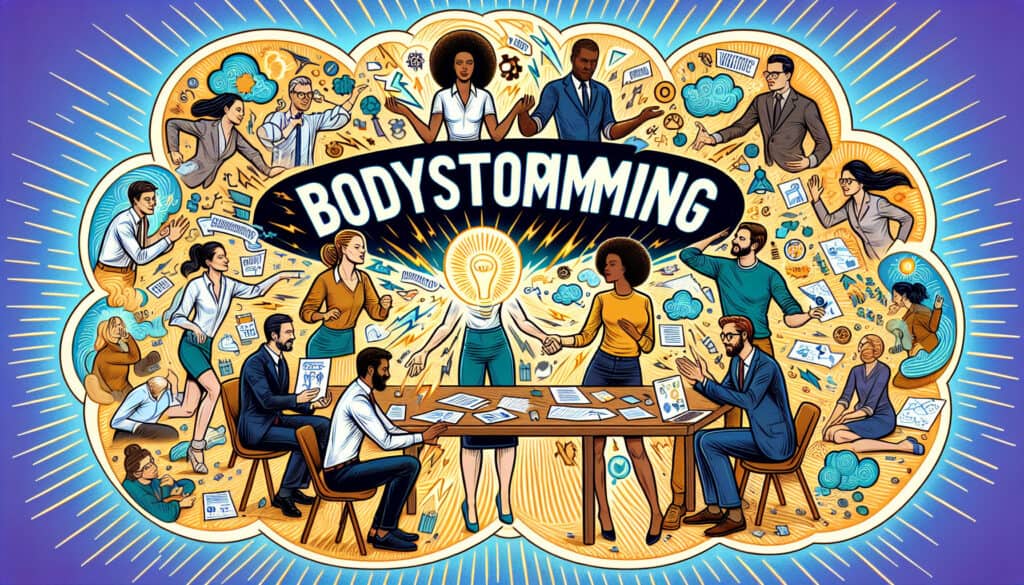A brainstorming technique that involves physically experiencing a situation to generate ideas.
- 方法: 工程, 质量
Bodystorming

- 集思广益, 创造力, 设计思维, Human-Centered Design, 构思, 交互设计, 原型设计, 用户体验(UX), 以使用者為中心的設計
Bodystorming
- 集思广益, 创造力, 设计思维, Human-Centered Design, 构思, 交互设计, 原型设计, 用户体验(UX), 以使用者為中心的設計
目标
如何使用
- In bodystorming, participants act out a scenario to gain a deeper understanding of the user experience. This can help to generate more empathetic and 以用户为中心 ideas.
优点
- Provides a rich and contextualized understanding of the user experience, can lead to more innovative and user-centered ideas, and can be a fun and engaging way to brainstorm.
缺点
- Can be difficult to set up, requires a willingness from participants to be physically active and to role-play, and may not be suitable for all types of problems.
类别
- 构思, 产品设计
最适合:
- Generating user-centered ideas by physically experiencing a situation.
Bodystorming can be particularly effective in industries such as healthcare, consumer electronics, and automotive design, where understanding user interactions with products or services is paramount. During this methodology, participants may include designers, engineers, marketing teams, and actual users or stakeholders, enriching the ideation process with diverse perspectives. This approach is especially beneficial during the ideation and prototyping phases of design projects, where conventional brainstorming might fall short in capturing the realism of physical interactions or emotional responses. For instance, when designing a new 医疗器械, team members might simulate patient-doctor interactions to highlight potential obstacles in usability, thus allowing designers to address real-world concerns proactively. This methodology encourages playful experimentation, fostering an environment where team members feel comfortable exploring unconventional ideas without the constraints of traditional brainstorming methods. Engaging in bodystorming can also enhance team cohesion, as participants share experiences and insights that can lead to unexpected solutions, making it a valuable tool in the iterative design process. As teams physically immerse themselves in user situations, the tangible experience can spark innovative thoughts that may not surface through standard abstract brainstorming sessions.
该方法的关键步骤
- Identify a specific user scenario to explore.
- Assign roles to participants, ensuring diversity in perspectives.
- Act out the scenario, focusing on behaviors, emotions, and interactions.
- Encourage improvisation and spontaneous responses during the role-play.
- Observe the dynamics and take note of key interactions and reactions.
- Debrief immediately after the enactment to discuss experiences and observations.
- Brainstorm ideas and solutions based on insights gained from the enactment.
专业提示
- Encourage participants to adopt exaggerated physical movements and emotions to immerse themselves fully in the user's experience.
- Utilize props and environmental elements to simulate real-world interactions, enhancing authenticity in the scenarios.
- Incorporate targeted role-play scenarios that explore edge cases or unexpected user behaviors for deeper insights.
历史背景
1986
(如果日期不详或不相关,例如 "流体力学",则对其显著出现的时间作了四舍五入的估计)。

相关文章
METS 卡路里计算器
元分析
信息映射
心理模型图
可接受的最大推力和拉力
物料需求计划(MRP)